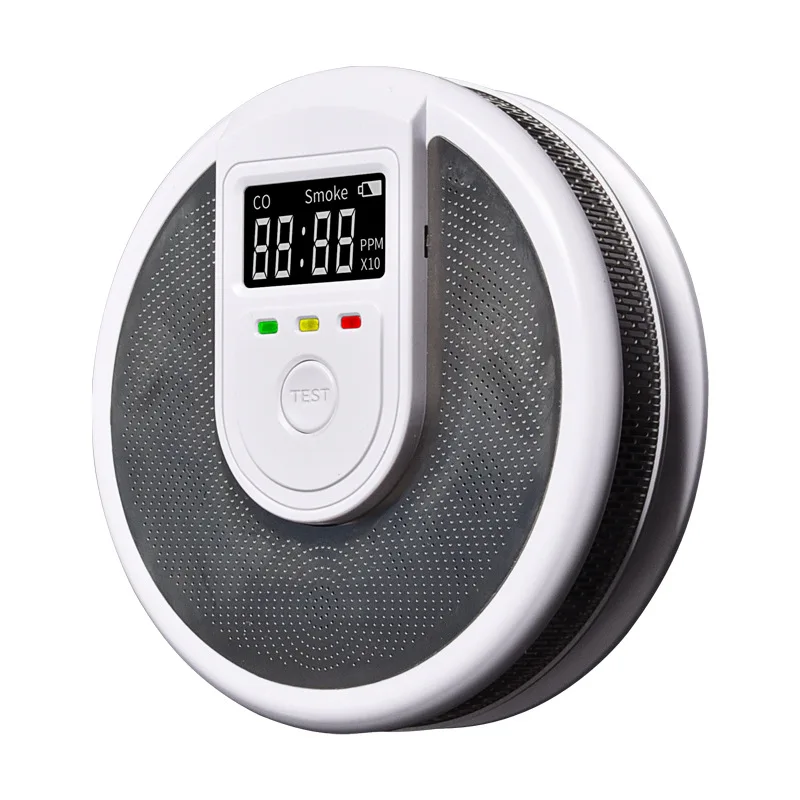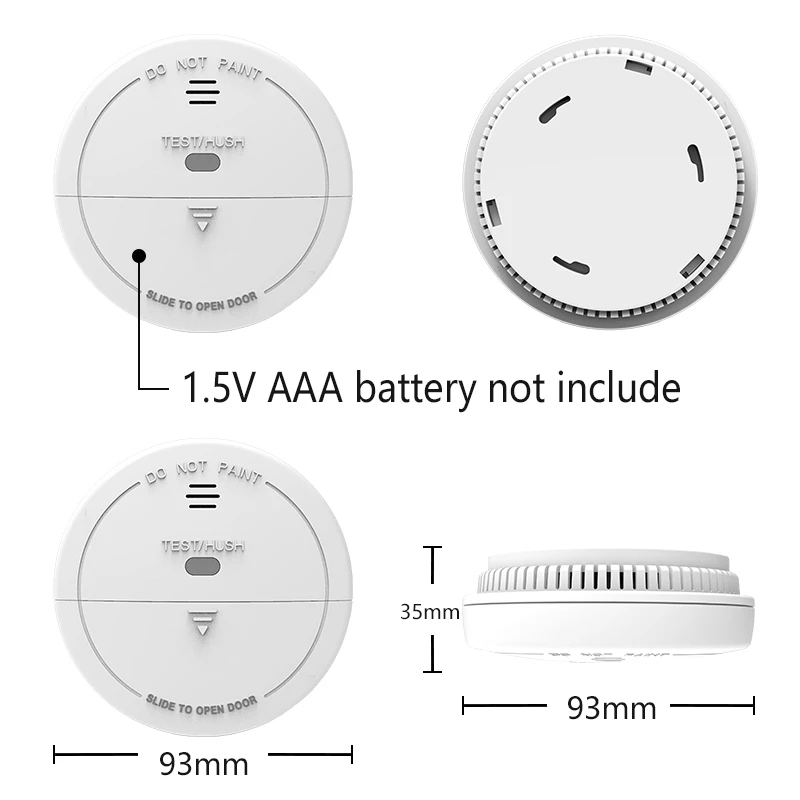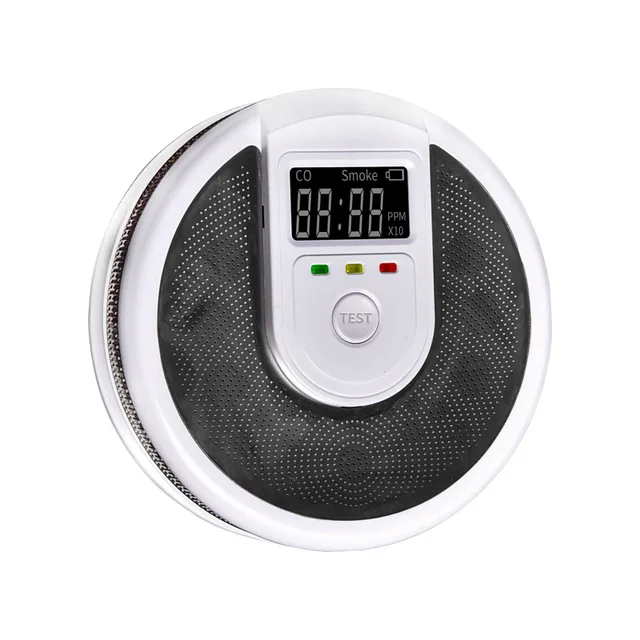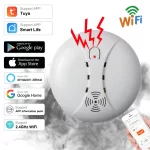Common Reasons Why Your First Alert Alarm is Chirping
Dealing with a chirping First Alert smoke alarm can be frustrating. Let’s look at common reasons why this may happen:
- Low Battery: The alarm may chirp when the battery power is low. A single chirp every 40 to 60 seconds often signals a low battery.
- End of Life: Smoke alarms don’t last forever. A different chirping pattern might mean your alarm is old and you need to replace it.
- Dust or Insects: Sometimes, dust or tiny bugs can set off the alarm. They interrupt the sensor, causing the alarm to chirp.
- Malfunction: A faulty alarm might chirp even when the battery is fresh. This unusual chirp needs checking.
Understanding these common causes helps to tackle the problem quickly. You will know what steps to take to silence the chirp. Keep your alarm working well and feel safe at home.

Steps to Safely Silence Your Chirping First Alert Smoke Alarm
When you hear your First Alert smoke alarm chirping, it’s telling you something needs attention. Use these steps to safely silence the chirps and maintain safety:
- Identify the Beep: Listen to the chirping pattern. Is it every 40 seconds? This usually means low battery.
- Press the Silence Button: Most alarms have a ‘silence’ or ‘test’ button. Press it to see if it stops the chirp.
- Turn Off Power: If hardwired, turn off the power to the smoke alarm at your circuit breaker.
- Remove the Battery: Open the alarm cover. Safely replace the battery to stop the chirping.
- Clean the Alarm: Dust off the sensor using compressed air or a soft brush. This may stop the chirping.
- Reset the Alarm: After battery replacement and cleaning, hold the test button to reset the alarm.
- Turn Power On: If hardwired, restore power and listen for further chirping.
- Seek Professional Help: If chirping continues, reach out to an electrician or alarm specialist.
- Test the Alarm: Once silent, press the test button. Ensure it’s working correctly.
Replacing the Battery: A Simple Solution to Stop the Chirping
A beeping First Alert smoke alarm often means a low battery. The chirp usually occurs every 40 seconds. Here is how you can replace the battery and stop the noise:
- Find the Right Battery: Check the alarm’s manual to see what battery type you need.
- Open the Alarm: Twist off the cover or slide it open to access the battery.
- Remove the Old Battery: Take out the old battery. Notice how it fits before removing it.
- Place New Battery: Insert the new battery as the old one was. Match the + and – ends.
- Close the Alarm: Once the battery is in, close the cover securely.
- Test the Alarm: Push the test button. Ensure the new battery works and the alarm sounds.
Remember to replace batteries as soon as you hear chirping. It is a simple fix to keep you safe.
End of Life: Recognizing When Your Alarm Needs Replacement
Sometimes chirps mean your First Alert smoke alarm needs replacing. Alarms have a lifespan, typically around ten years. Check your alarm’s manufacturing date. If it’s old, get a new one.
Look for the Date of Manufacture
Your alarm’s back will show the date it was made. This helps decide if you need a new alarm.
Consistent Chirping as a Sign
If chirps happen often and batteries are fresh, it might be time to replace the alarm.
End of Life Signal
Many alarms beep differently to show they’re at the end of life. Read your manual to learn these sounds.
Stay Protected
Replace old alarms to keep your home safe. Don’t wait for alarms to fail. Follow safety guidelines and replace alarms before they reach ten years or as recommended.
Understanding Other Causes of Chirping and How to Address Them
Sometimes, a low battery isn’t the issue when your First Alert smoke alarm starts chirping. Other factors can cause this as well. Here is what to check and how to deal with it:
- Dust and Debris: Dust can gather inside the alarm and trigger chirping. Use a vacuum hose to clear away the dust from the alarm’s vents.
- Insects: Small bugs might crawl inside and cause false alarms. Open the cover and gently clean inside to remove any insects.
- Temperature Changes: Extreme hot or cold can affect your alarm. Ensure your alarm is not installed near a drafty window or a heating/cooling vent.
- Humidity: High moisture can lead to false chirps. Install alarms away from bathrooms or other humid areas in your home.
- Loose Battery Connection: Ensure the battery connections are secure and not loose. Adjust the battery or its connections if needed.
- Malfunctioning Alarm: If none of these apply, the alarm might be broken. Consider replacing it if troubleshooting doesn’t stop the chirping.
Address these issues as soon as you notice chirping. Keeping your First Alert smoke alarm clean and well-maintained is crucial for your safety.

Tips for Regular Maintenance to Prevent Future Chirps
Regular maintenance can stop your First Alert smoke alarm from chirping unexpectedly. Here are tips to keep your alarm in top shape:
- Test Regularly: Press the test button each month. This ensures the alarm and battery work well.
- Replace Batteries: Change the batteries at least once a year. Don’t wait for a chirp.
- Clean the Alarm: Every six months, clean the alarm. Use a vacuum or a soft brush.
- Check for Damage: Look for any visible damage. Replace the alarm if you see any.
- Keep a Schedule: Write down when you test and maintain the alarm. This helps you remember.
- Follow the Manual: Read the alarm’s manual. It has specific care instructions.
- Avoid Paint and Stickers: Don’t paint over your alarm. Stickers can block sensors too.
Following these steps will help make sure your First Alert smoke alarm stays silent unless there is real danger.
The Importance of Immediate Action in Continuous Alarms
When your First Alert smoke alarm emits continuous alarms, it’s a signal of an immediate danger. Every second counts in situations like this, and understanding the urgency can save lives. If your alarm won’t stop beeping, you need to act fast. Here’s what to do:
- Evacuate Immediately: Safely leave your home. Do not try to find the source of the alarm.
- Call for Help: Once everyone is safe outside, call emergency services. Tell them about the alarm.
- Do Not Re-enter: Even if the alarm stops, do not go back inside until professionals say it’s safe.
- Assess Situations: After the check, if it’s false, think about why it happened. Could it be CO?
- Check Your Devices: Make sure all alarms are in working order to prevent future issues.
Continuous beeps are different from chirps. They often mean smoke or CO is detected. Check the manual for your alarm’s sounds. Replace devices promptly if they malfunction or reach end of life.
Your safety is the top priority. Ensure your First Alert smoke alarms are always up to date and functioning properly. Regular checks and immediate action can keep you and your family safe from dangers such as fire and carbon monoxide poisoning.
Choosing and Installing the Right First Alert Alarm for Your Home
Selecting the right First Alert smoke alarm is vital for your home’s safety. First Alert offers a variety of models to fit different needs. Before buying, consider your home’s size and layout. Choose interconnected alarms for larger homes; they signal each other in case of danger. Ensure you select alarms that fit the installation spots in your home. Battery-powered alarms are easy to install anywhere. They’re ideal if you prefer simple setup.
Assess Your Home’s Needs
Think about your home’s specific needs. Do you need a smoke alarm, carbon monoxide alarm, or both? First Alert has combination alarms for smoke and carbon monoxide. They provide dual protection in one device.
Choose the Right Model
First Alert’s alarms come in various models. Some use ionization sensors, best for detecting fast fires. Others use photoelectric sensors, better at catching smolder fires. Check the features and pick the one that suits your home.
Follow Installation Instructions
Read the alarm’s manual for installation guidance. Place smoke alarms on every level of your home, inside bedrooms, and outside sleeping areas. Install carbon monoxide alarms near sleeping areas and according to height guidelines.

Test After Installing
Once installed, test your alarms. Push the test button to make sure they work. Regular testing is crucial for safety. Replace batteries every year, and replace alarms as recommended in the manual.
By choosing and installing the right First Alert alarm, you are taking a critical step in protecting your home and loved ones from potential fire and carbon monoxide dangers.


